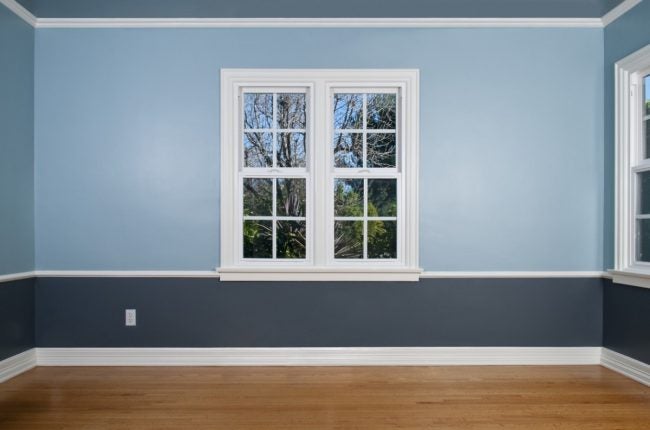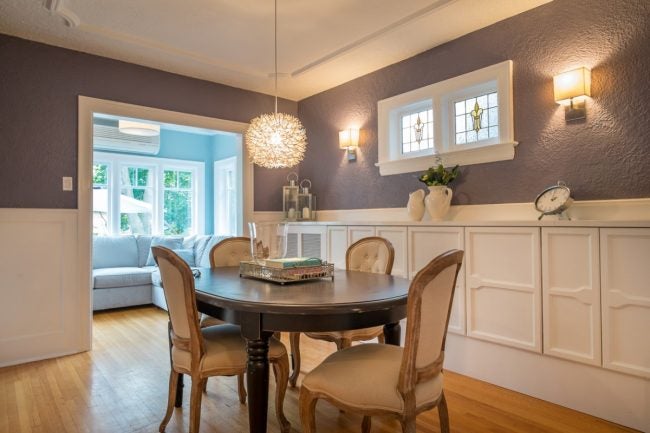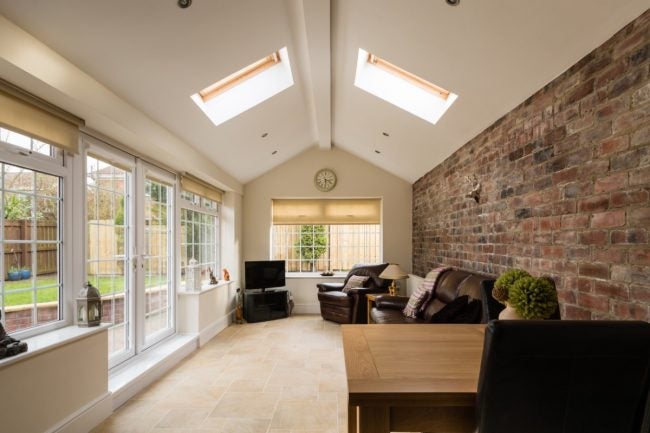Bedroom Wall Height
Solved! The Standard Ceiling Height for Homes
Learn how to choose the ideal ceiling height and style for your new home construction or remodeling project.

Photo: istockphoto.com
Q: I'm in the planning stages of building my own home with the help of a trusted contractor. I want high ceilings, but I'm not sure what dimensions to ask for. Can you help?
A: Congratulations on your home-building project—and for thinking smart about ceiling height. Folks tend to obsess about square footage, but ceiling height goes a long way in defining the spaciousness of a house. High ceilings give rooms a light and airy feel and add grandeur to entryways and staircases. While lower ceilings can create a sense of calm and coziness, if they're too low, rooms can feel dark and cramped. What's more, there are various interesting ceiling styles that homeowners may consider installing, in remodels as well as new construction. Read on to learn about the standard ceiling height in construction today, as well as the height for different popular ceiling styles.

Photo: istockphoto.com
Today's standard ceiling height is nine feet.
Newer houses are often built with nine-foot ceilings on the first floor (and, sometimes, eight-foot ceilings on the second story). While many custom builders will assume that homeowners want nine-foot ceilings, don't take it for granted. Put your desired ceiling height measurements in the construction contract you and your contractor sign. Many high-end builders don't charge extra for nine-foot ceilings, but be sure to discuss any additional costs up front.
Ceilings can go beyond the industry standard, to 10 and 12 feet high.
Higher ceilings, up to 12 feet, are not uncommon, especially in renovated loft apartments and pre-war style architecture (between 1890 and 1940). A new house can also be designed with varying ceiling heights. A grand, 10- or 12-foot entryway ceiling, for example, can pair with a more intimate nine-foot ceiling in the living room. Varying ceiling heights allow you to creatively play with the space, using paint, molding, exposed rafters, and/or skylights to add eye-catching features.
Shorter eight-foot ceilings may make your home feel more cramped, even dated.
There was a time when eight-foot ceilings were the norm. One reason: Timber typically comes in eight-foot (2.44 meter) lengths, so for houses built with timber-frame construction, eight-foot ceilings make sense. What's more, houses built in the 1970s and 1980s commonly had eight-foot first-floor flat ceilings due to the energy crisis that gripped the country. (Unrest in the Middle East led to an embargo on oil exports to the United States.) In an effort to stem heating/cooling costs, houses were constructed with less interior space by shortening ceilings.
RELATED: 9 Clever Ways to Counteract Low Ceilings
Home insulation and heating/cooling systems have vastly improved since then, and eight-foot ceilings are now considered outmoded. You can direct heat or cooling wherever and whenever it may be needed to help prevent utility bills from skyrocketing. But if you're still concerned about the energy costs related to higher ceilings, discuss this with your general contractor.
Coffered ceilings, which have a three-dimensional look, require a minimum of nine feet.
Though flat, a coffered ceiling adds the architectural character of three-dimensional grooved panels that give a checkerboard appearance. This dramatic look demands more perspective than an eight-foot ceiling provides. Installing a coffered ceiling costs about $25 per square foot, depending on the type of wood used; the process is highly customized and expert carpentry is required.

Photo: istockphoto.com
A tray ceiling generally requires a height of at least a nine feet.
A tray ceiling, another eye-catching architectural element, features a standard, flat, nine-foot ceiling around the perimeter of the room, with a raised central section inset about a foot higher. In new construction, installing a tray ceiling can cost between $3 and $5 per square foot, depending on home location, room size, and the amount of work required.
When it comes to a remodel, if your house has older, eight-foot ceilings, discuss the viability of a tray ceiling with your contractor. A drop-down border of paneling that hangs below the main wall frames is required, which could extend several inches below the eight-foot mark—the minimum ceiling height according to most building codes.

Photo: istockphoto.com
A sloped ceiling's height will vary depending on the room's size and location.
Sloped ceilings rise at an angle, following the roofline. They're often found in the attics of homes with a pitched roof—the two sides of the roof meet at the highest peak. However, sloped ceilings can also be found in living rooms, bedrooms, bathrooms, and closets. In a living space, a sloped roof typically has a low point of seven feet, then rises to 10 feet. In general, at least 50 percent of a sloped ceiling should be higher than seven feet. Be sure to check local building codes, which will tell you how low (but not necessarily how high) a sloped ceiling can be.

Photo: istockphoto.com
Luxuriously high ceilings can easily surpass 13 feet.
Architectural styles from traditional mansions to new, custom-built homes allow for ceilings 13 feet and above. These soaring ceilings draw our attention upward, and often reveal beautiful craftsmanship and design features—such as exposed beams, chandeliers, or skylights. The most popular styles are cathedral and vaulted ceilings:
- A cathedral ceiling has equal sloping sides (that follow the roof's pitch) and a central point that is higher than the two sides.
- A barrel vault consists of a single curved arch, built under the room's rafters.
- A groin vault consists of two barrel vaults, interesting at 90-degree angles, creating four convex (outward-curving) ribs, rising from the corners of the room.
- A cloister vault looks similar to a groin vault but differs structurally. The arch rises from the middle of each wall—not the corners—and the ribs are concave, curving inward.
You'll need to consult with your builder to determine the exact measurements for a vaulted or cathedral ceiling that work with your room dimensions. Be aware that vaulted and cathedral ceilings have various pros and cons, including higher installation costs and the extra energy required to heat and cool the room.
Here's how to choose a ceiling height that's right for you.
- For new flat, coffered, tray, or sloped ceilings, go for a minimum of nine feet.
- To extend old eight-foot ceilings in a remodel, aim for a minimum of one foot higher.
- To refit your old ceiling with a tray extension, determine whether your existing ceiling is high enough for a drop-down border (at least eight feet, preferably higher).
- For high ceilings, talk to your builder about whether 10- or 12-foot dimensions are best. Then tour homes, similar to yours, with a range of ceiling heights, to assist in making your decision.
- For new vaulted or cathedral ceilings, aim for a minimum of 13 feet at the ceiling's top. Consult with your builder about the best type and height for a vaulted ceiling, based on the spatial and structural limitations of the house.
Source: https://www.bobvila.com/articles/standard-ceiling-height/

0 Komentar